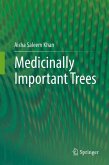This atlas presents anatomical descriptions of the xylem, bark and pith of 264 species belonging to 71 families. It highlights the anatomical diversity of trees, shrubs, dwarf shrubs, woody lianas and several of the prominent perennial herbs from the Eastern Mediterranean region, with a focus on the island of Cyprus. The island's topography and biogeographic history combine to provide a wide range of habitats and diverse flora including widespread, endemic, and ornamental species.
The monograph for each species includes a description of the anatomical structures of the stem and twig xylem and the twig's bark and pith, as well as color micrographs of double-stained sections of each of these plant parts. These entries are accompanied by a photograph and a brief description of the plant including stem wood density, height, habit, flower, leaf and fruit characteristics, and a map showing its geographic and altitudinal distribution in the region. Xylem descriptions follow the IAWA lists of microscopic features for hardwood and softwood identification. For bark and pith descriptions, a new coding system developed by the authors is applied. Lastly, the work offers a key for wood identification that was developed to differentiate between groups of species by using a small number of features that are unambiguous and clearly visible. The atlas will be a valuable guide for botanists, ecologists, foresters, archeologists, horticulturists and paleobotanists.
The monograph for each species includes a description of the anatomical structures of the stem and twig xylem and the twig's bark and pith, as well as color micrographs of double-stained sections of each of these plant parts. These entries are accompanied by a photograph and a brief description of the plant including stem wood density, height, habit, flower, leaf and fruit characteristics, and a map showing its geographic and altitudinal distribution in the region. Xylem descriptions follow the IAWA lists of microscopic features for hardwood and softwood identification. For bark and pith descriptions, a new coding system developed by the authors is applied. Lastly, the work offers a key for wood identification that was developed to differentiate between groups of species by using a small number of features that are unambiguous and clearly visible. The atlas will be a valuable guide for botanists, ecologists, foresters, archeologists, horticulturists and paleobotanists.
From the reviews:
"This book is intended as an identification manual of the woody (lignified) tissues of both wild and cultivated trees, shrubs, sub-shrubs and climbers from across the Eastern Mediterranean. ... a wonderful and rich tool within the overall kit needed to study the remains of wood and other woody plants specific to a region with much diversity and varied archaeological research." (Danielle de Carle, assemblage, assemblage.group.shef.ac.uk, May, 2014)
"This book is intended as an identification manual of the woody (lignified) tissues of both wild and cultivated trees, shrubs, sub-shrubs and climbers from across the Eastern Mediterranean. ... a wonderful and rich tool within the overall kit needed to study the remains of wood and other woody plants specific to a region with much diversity and varied archaeological research." (Danielle de Carle, assemblage, assemblage.group.shef.ac.uk, May, 2014)








